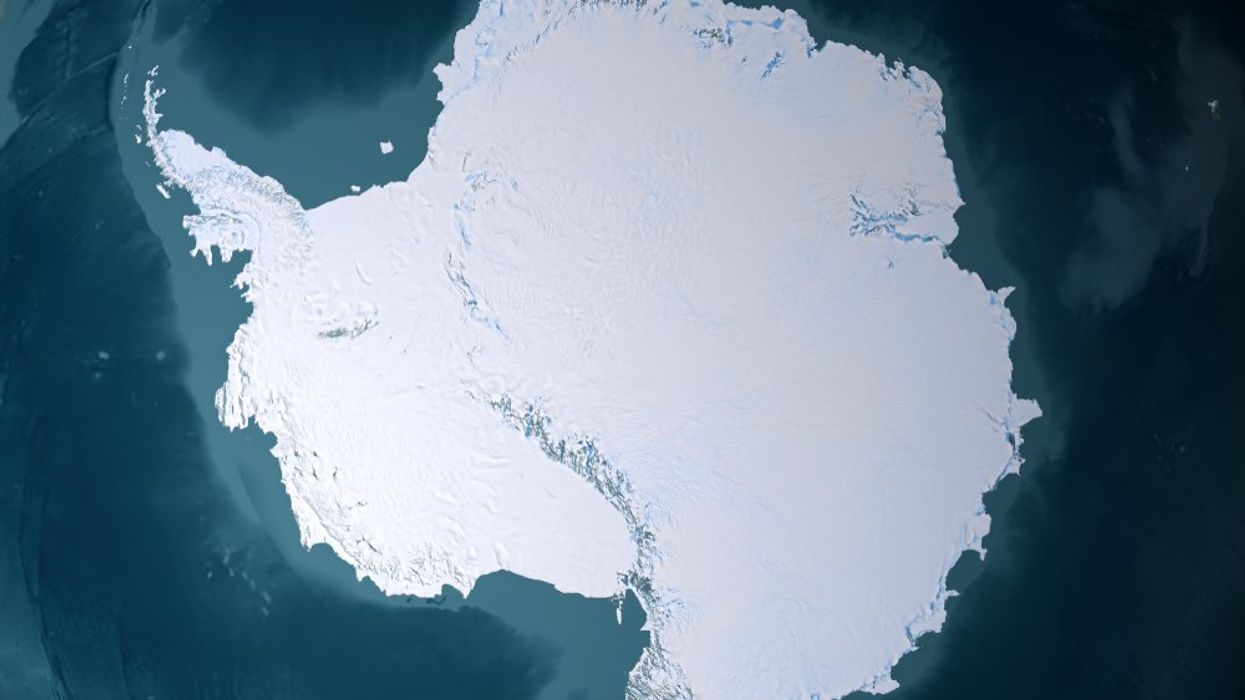Earth's widest glacier is threatening to break, which could contribute dramatically rising sea levels.
Described as the "weak underbelly" of the West Antarctic Ice Shelf, the Thwaites Glacier has also been nicknamed the "Doomsday Glacier" for its potential to raise sea levels. Scientists have monitored the glacier for decades to determine potential break points, where the ice shelf could come apart and create large icebergs.
The Thwaites Ice Shelf, which restrains the eastern portion of the glacier to prevent breakage, is likely to collapse within the next decade. While it would still take several centuries for the glacier to completely collapse, its contribution to rising sea levels would increase drastically following the loss of the ice shelf.
Research from over two dozen scientists recently published in Nature revealed the degree to which human-caused global warming is expected to impact glaciers. It found that destabilized glaciers could raise sea levels by 10 feet over the next few centuries.
Using an underwater robot named Icefin, researchers tracked how warm water is channeled through crevices in the ice — also known as terraces — which carve through ice and eventually widen, leaving potential break points.
Britney Schmidt, a scientist at Cornell and lead researcher behind Icefin, told The Washington Post that the biggest revelation was how uneven the ice melt was.
“This melting that starts right at the grounding line in crevasses is really important for what happens downstream,” she said. “Downstream, where it’s falling apart, these crevasses become these giant features.”
The primary cause of such developments is rising temperatures from greenhouse gas emissions, though Schmidt said "it shouldn't be like that."
“The warm water is getting into the weak spots of the glacier, and kind of making everything worse,” she said, adding, "That’s not what the system would look like if it wasn’t being forced by climate change.”
Ted Scambos, a glaciologist at the University of Colorado, said that while the Thwaites retreating may not be preventable at this stage, but that there are still precautions that can manage the the fallout.
“While we might see only a moderate add-on to sea level rise in the next fifty years, the processes are real, and the triggers for accelerating the collapse are bound to occur,” Scambos explained. “We have also seen how to apply the brakes, what parts of the climate and ocean system are the main drivers, and what makes them drive ... We have some time to get this under control. Otherwise, the century of our grandchildren’s children will be very, very difficult.”
- Half of Earth's Glaciers Will Melt By End of Century, Study Finds ›
- Melting Glaciers Endanger 15 Million People Worldwide: Report ›
- Seattle Glacier Has 'Completely Disappeared,' Researchers Say ›



















































